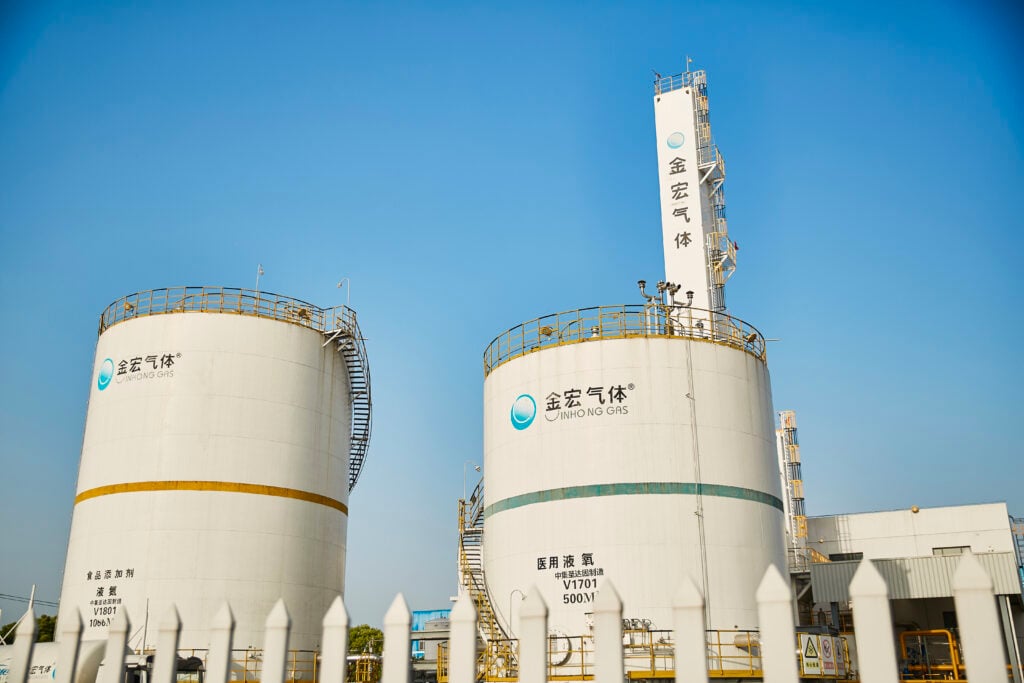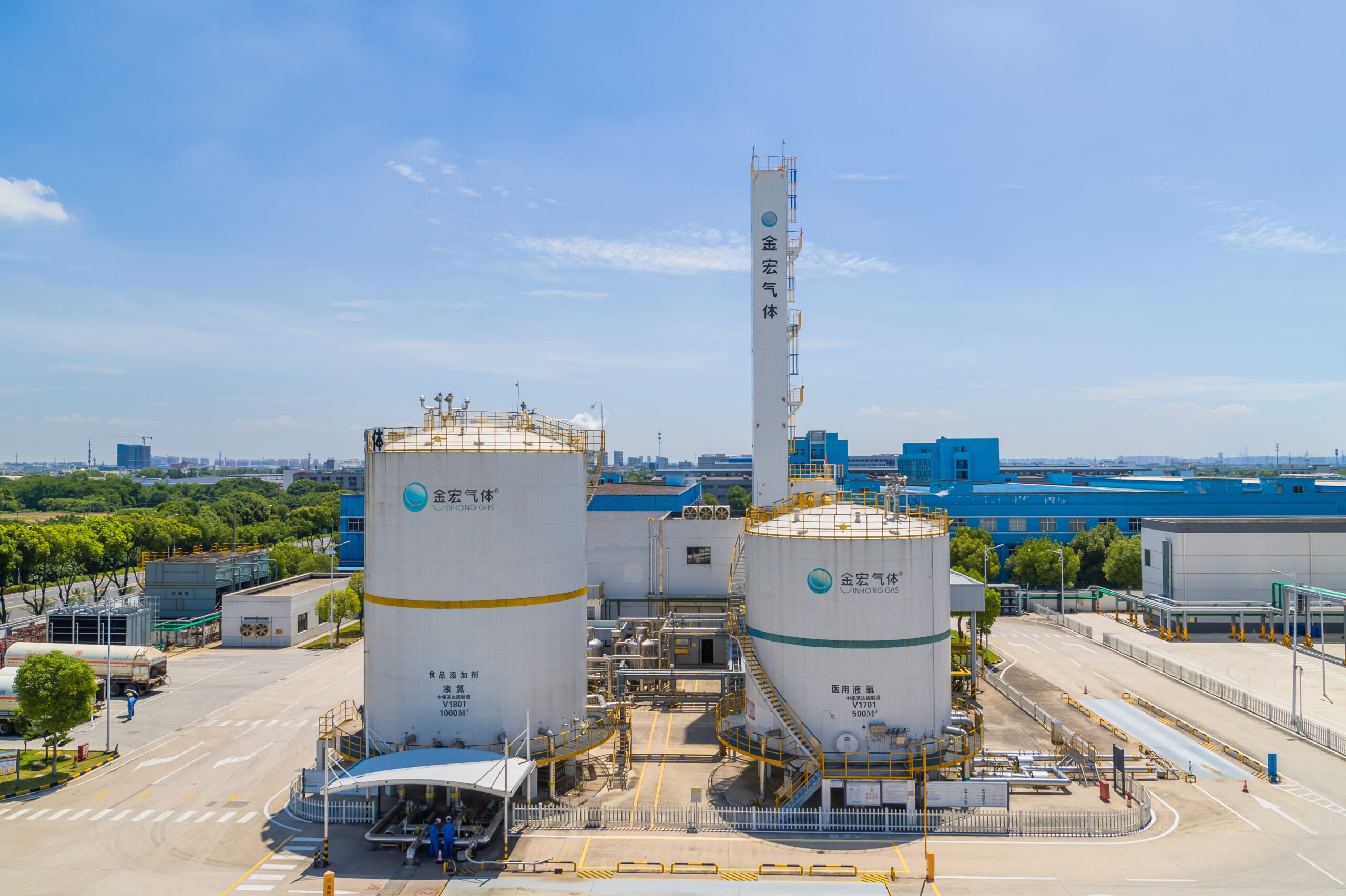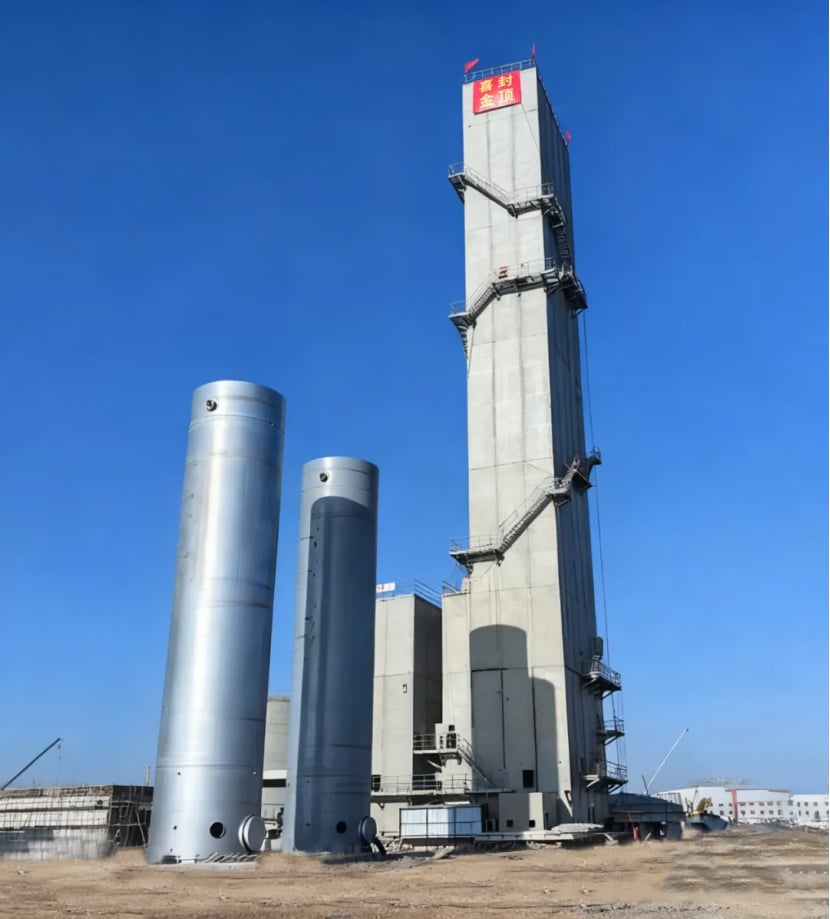The global industrial gas market plays a crucial role across sectors such as manufacturing, electronics, energy, healthcare, and environmental protection. Among the key players, China and the United States stand out as the two largest and most influential markets. Understanding the differences between industrial gas companies in these two countries is critical for investors, procurement specialists, and global supply chain managers. This article provides a comprehensive comparison of market size, leading enterprises, technological strength, pricing strategies, and future outlook.

2. Market Overview: China vs US
2.1 Market Size & Growth
As of 2024, the US industrial gas market exceeds USD 25 billion, underpinned by steady growth from sectors such as aerospace, healthcare, and renewable energy. China’s market, now valued above USD 20 billion, is expanding rapidly thanks to infrastructure projects, electronics manufacturing, and clean energy adoption. Projections indicate that by 2027, China may surpass the US in production volume, although the US is expected to maintain higher profit margins through advanced technologies and value-added services.
2.2 Key Growth Drivers
In the US, growth is largely driven by high-value industries such as semiconductors, biotech, and clean energy. China’s expansion is fueled by large-scale demand from steel and chemical industries, along with rapid growth in electric vehicles (EVs) and photovoltaics. The country’s emphasis on self-sufficiency and clean manufacturing further stimulates demand, especially for oxygen in metal fabrication and hydrogen for fuel cell technologies.
3. Major Industrial Gas Companies
3.1 United States
- Air Products and Chemicals: A global leader with a focus on hydrogen infrastructure and clean energy projects.
- Linde (North America): Known for engineering excellence and innovations across a wide range of applications.
- Praxair (merged with Linde): Previously specialized in industrial and specialty gases for multiple sectors.
- MATHESON and Messer: Regional players with growing influence in specialized market segments.
3.2 China
- Jinhong Gas (金宏气体): A fast-growing national brand with a strong presence in specialty gases and electronics support.
- Yingde Gases: One of the largest on-site gas providers for steel and chemical industries.
- Hangzhou Oxygen Plant Group (Hangyang): Offers integrated cryogenic technology and gas systems.
- Foshan Huate and Suzhou Jinhong: Key regional suppliers with active international expansion.
Key Differences Between China and US Industrial Gas Industries
| Category | United States | China |
|---|---|---|
| Market Size (2024) | > USD 25 billion | > USD 20 billion |
| Growth Drivers | High-value sectors: semiconductors, biotech, clean energy | Volume-driven: steel, chemicals, EVs, photovoltaics |
| Top Companies | Linde, Air Products, Praxair, MATHESON, Messer | Jinhong Gas, Yingde Gases, Hangyang, Suzhou Jinhong |
| Technological Strength | Advanced R&D, green hydrogen, CCUS, AI optimization | Rapid tech progress, strong in gas separation & automation |
| Pricing | Higher prices, but premium services and reliability | 20–30% lower prices due to lower production costs |
| Profit Margins | Higher, due to value-added solutions | Lower, but improving through specialty gases and exports |
| Regulatory Environment | Mature, strict ESG and safety standards | Evolving, aligning with dual carbon goals |
| R&D Focus | Green hydrogen, carbon capture, medical & aerospace gases | Clean energy, electronics-grade gases, automation |
| ESG Implementation | Established, transparent reporting | Emerging, with growing investments but uneven enforcement |
| Key Opportunities | Hydrogen infrastructure, CCUS, emerging markets | Domestic industrial upgrade, global expansion |
4. Product Portfolios & Core Capabilities
Both Chinese and US companies provide a full range of industrial gases, including oxygen, nitrogen, argon, carbon dioxide, hydrogen, and helium. US firms tend to lead in high-purity specialty gases, microbulk solutions, and tailored gas systems for sectors like healthcare and aerospace. Chinese companies are quickly narrowing the gap, especially in electronics-grade nitrogen and hydrogen for EV battery applications.
5. Technological Advancements & R&D
US industrial gas companies invest heavily in R&D, focusing on areas like green hydrogen, carbon capture utilization and storage (CCUS), and AI-driven delivery systems. Linde and Air Products are at the forefront of blue and green hydrogen collaborations with global energy firms. In contrast, China—while historically a technology follower—has made significant progress in separation technology and automation. Firms like Jinhong Gas are accelerating innovation through patent filings and dedicated research centers in clean energy.
6. Cost Structures & Pricing
China benefits from lower production costs due to cheaper labor, energy, and government support. As a result, gas prices in China are typically 20–30% lower than in the US for standard bulk products. However, US companies achieve stronger margins through premium services, technology integration, and reliable long-term contracts. For industries where quality and compliance are critical, buyers often prioritize US or European suppliers despite the cost.
7. Regulatory Landscape & ESG Considerations
The US maintains a mature regulatory framework, with robust enforcement from agencies like the EPA and OSHA. ESG practices are deeply embedded, featuring detailed disclosures and ambitious carbon neutrality goals. In China, environmental and safety regulations are evolving rapidly, in line with its “dual carbon” strategy. Leading Chinese companies have begun publishing ESG reports and investing in green technologies, though consistent implementation across the industry remains a challenge.
8. Challenges and Opportunities
Key Challenges:
- Persistent US-China trade tensions impacting supply chains
- Global shortages of gases like helium and CO₂
- Rising energy costs and tightening environmental regulations
Opportunities:
- Cross-border collaboration on hydrogen infrastructure and CCUS
- Growth opportunities in emerging markets such as India and Southeast Asia
- Regional localization to mitigate tariffs and improve logistics efficiency
9. Conclusion: Strategic Insights
The US leads in innovation, high-value applications, and ESG integration, while China offers unmatched scale, competitive costs, and alignment with rapid industrialization. For global firms, choosing between these markets requires a nuanced evaluation of technical requirements, compliance needs, and long-term strategy. Often, the most resilient approach involves forming strategic partnerships with top-tier suppliers in both regions to optimize risk and value.
10. FAQ
Q: Who is the largest industrial gas company in China?
A: Yingde Gases leads in volume, while Jinhong Gas is recognized for its growth in specialty gases and R&D capabilities.
Q: Are US gas companies investing in China?
A: Yes. Companies such as Linde and Air Products maintain major operations and joint ventures in China.
Q: How do industrial gas prices differ between the US and China?
A: Prices in China are typically 20–30% lower due to lower labor and energy costs, along with government incentives.
About Us
Jinhong Gas – Your Trusted Industrial Gas Partner
At Jinhong Gas, we specialize in the production and supply of high-purity industrial gases, serving customers across the electronics, healthcare, chemical, and environmental sectors. With over two decades of experience, cutting-edge R&D, and a strong focus on clean energy, we are committed to delivering reliable, cost-effective, and customized gas solutions worldwide. Whether you need specialty gases for semiconductor production or bulk supply for industrial applications, Jinhong Gas is your dependable partner for innovation, quality, and sustainability.



